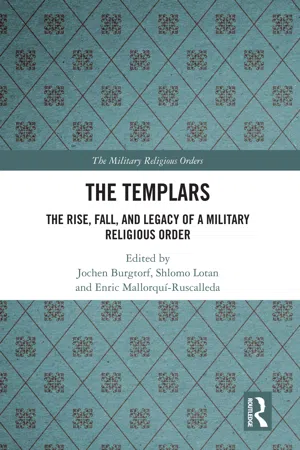The lord of Baudement’s crusading activities during this time period are also noteworthy. While we do not know whether Andrew of Baudement took part in Count Stephen’s expeditions (the sources available to us are silent on this topic), he was involved in the crusading activities of his feudal overlord, Count Hugh of Troyes/Champagne. Hugh organized his first expedition to the Holy Land in 1104, when he went to Jerusalem and stayed there until at least the end of 1107 or the beginning of 1108; Hugh made a second pilgrimage to the East in the years 1114–1116, and there are strong reasons to believe that Andrew of Baudement took part in both of these expeditions. A document issued by King Baldwin I of Jerusalem – and dated by Reinhold Röhricht and Hans Eberhard Mayer to the year 1108 – features a witness by the name of Andreas de Valdement, and Mayer identifies him as Andrew de Baudement.8 This identification relates to another document, also issued by Baldwin I and dated to 1115, which names as one of its witnesses as Andreas de Baldement who, without a doubt, should be identified with Andrew de Baudement.9
It is significant that another one of Count Hugh of Champagne’s vassals, namely, Hugh de Payns (the future cofounder and first master of the Templars), also participated in both expeditions to the Holy Land. The witness lists of the aforementioned documents issued by King Baldwin I of Jerusalem also contain the name of another Champenois: Guy de Milly. It is evident that, between 1104 and 1116, crusaders from Champagne under the leadership of their count constituted a significant group of pilgrims visiting the Holy Land. Some of them, including Guy de Milly and Hugh de Payns, eventually decided to settle in the East permanently; however, they did not sever their ties with France and Champagne.
Andrew de Baudement’s career at the court of Count Hugh of Champagne, where he acted as the seneschal of Champagne, is well known. Andrew even kept this title after 1125, when Hugh resigned, passed the power to his cousin, Count Thibaut II of Blois, and joined the ranks of the Knights Templar: in a document issued in 1128, he is mentioned (in the genitive form) as domini Andreae, dapiferi sui, of Count Thibaut.10 In twelfth-century France, the title and responsibilities of the steward (dapifer) were incorporated into the duties of the seneschal of the court. Thus, at the beginning of the twelfth century, Andrew de Baudement and his family were members of the nobility of the county of Champagne with strong ties to the Latin East.
Andrew’s career certainly benefitted from his marriage to Agnes, the heiress of the lordship of Braine (département de l’Aisne), whose name also appears in documents issued during the first half of the twelfth century.11 We do not know when exactly their marriage was arranged, but it must have been at the end of the eleventh or the beginning of the twelfth century, because their numerous children were already adults in the years 1128–1133. The precise origins of the lordship of Braine are uncertain, but in the year 1049 there was a lord named Hugh who was excommunicated because of his political and ecclesiastical activities. The son of this Hugh was probably Guy de Braine who, from the 1070s on, can be found in the entourage of Count Thibaut I of Blois-Champagne (d. 1089). Agnes de Braine appears to have been Guy’s daughter and the heiress of the lordship which, even then, was a fief of the counts of Champagne.12 There is, however, no convincing evidence that, at this time, the lordship of Braine enjoyed “comital” status. The marriage between Agnes de Braine and Andrew de Baudement probably took place with the consent of their feudal overlord, in this case the Count of Champagne: this would have been either Thibaut I, his older son Stephen (or Stephen-Henry), or his y...
